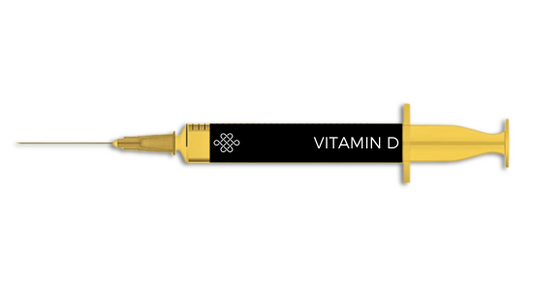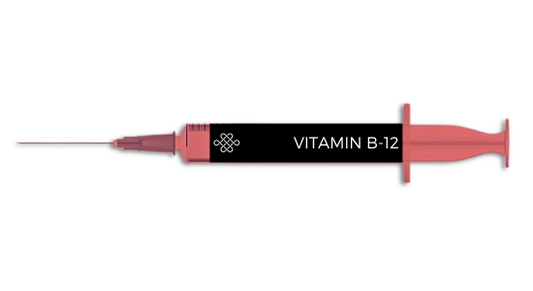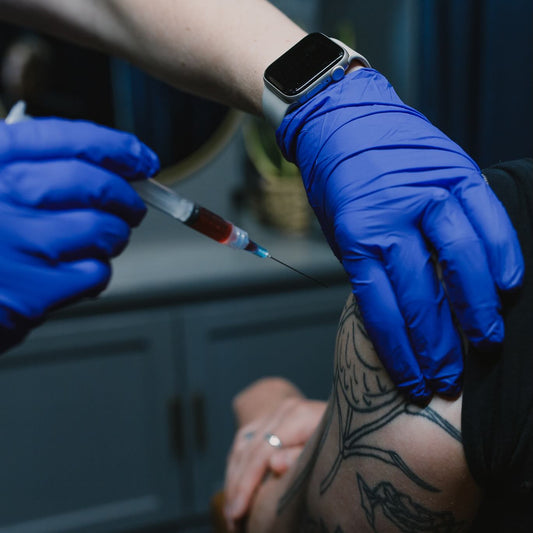Embracing Proactive Wellness Over Reactive Care: Reviving Ancient Wisdom for Better Health


The Reactive Approach of Western Medicine
In the landscape of American healthcare, there's a prevailing approach that dominates how we address health and wellness: the reactive model. Rooted in the traditions of conventional medicine, allopathic medicine aims to treat diseases using remedies (such as drugs or surgery) that counteract disease symptoms. This system excels in emergencies, infections, and acute care, but it often lacks when it comes to long-term proactive wellness.
Reactive care tends to be episodic and symptom-focused rather than holistic. Many patients find themselves in cycles of fatigue, recurrence, and only temporary relief, when much of this could be mitigated through disease prevention strategies. Often, they don’t receive a full diagnosis until the condition has progressed.
Despite having the highest healthcare spending globally, the U.S. faces poor outcomes in life expectancy, chronic pain, and several prominent chronic diseases like diabetes and heart disease. This highlights the critical need for shifting toward a comprehensive approach to health.
The Cost of Care with Little Return
The United States spends the most on healthcare compared to other developed countries, yet it often ranks poorly in health outcomes and efficiency metrics. Here are some data points that illustrate this disparity:
Healthcare Expenditure
The U.S. consistently spends the highest percentage of its GDP on healthcare among developed nations. As of 2020, healthcare spending in the U.S. accounted for about 17.7% of GDP, significantly higher than countries like Germany (11.5%), Canada (11.6%), and the United Kingdom (10.3%). (Source: OECD Health Statistics 2022)
Life Expectancy
Despite high healthcare spending, life expectancy in the U.S. is lower than in many other developed countries. In 2020, the average life expectancy at birth in the U.S. was 78.9 years, which lags behind countries like Japan (84.6 years), Switzerland (83.4 years), and Canada (82.7 years). (Source: World Bank, 2022)
Infant Mortality
The U.S. has a higher infant mortality rate compared to other developed countries. In 2020, the infant mortality rate in the U.S. was 5.3 deaths per 1,000 live births, while countries like Japan (2.1), Sweden (2.3), and Finland (2.3) had significantly lower rates. (Source: CDC, 2022)
Chronic Disease Burden
Chronic diseases such as diabetes, heart disease, and obesity are prevalent in the U.S. despite high healthcare spending. These conditions contribute to a significant portion of healthcare costs and affect overall population health outcomes. Many are treated with medications, but without addressing root causes, recurring symptoms remain.
Embracing a Proactive Health Philosophy
It's no surprise that individuals are increasingly taking control of their health, driving the rapid growth of the wellness industry. In fact, the wellness industry is one of the fastest-growing sectors, with a market value projected to reach $7 trillion by 2025. More people are seeking wellness providers who champion a proactive wellness approach, empowering them to take charge of their health before problems arise.
Preventative medicine has deep roots and long traditions across various cultures and countries. Many of these traditions emphasize holistic approaches to health, focusing on maintaining balance within the body and between the individual and their environment. Here are some notable examples: Eastern medicine, such as Traditional Chinese Medicine (TCM) and Ayurveda, adopts a holistic approach, viewing the body as an interconnected system where physical, mental, emotional, and spiritual aspects are integrated. It emphasizes maintaining balance and harmony within the body to prevent illness and promote overall physical health.
Ayurveda stresses daily routines (Dinacharya) and seasonal routines (Ritucharya) to maintain balance and prevent diseases. Disease is often viewed as an imbalance or disruption in the flow of vital energy (Qi in TCM, Prana in Ayurveda) or the harmony between body and environment. Treatment aims to restore balance and promote the body's natural healing abilities using therapies like acupuncture, herbal medicine, meditation, and dietary adjustments.
Japanese Kampo Medicine utilizes herbal formulas, acupuncture, moxibustion, along with dietary and lifestyle modifications. Traditional Korean Medicine (TKM) incorporates acupuncture, herbal medicine, cupping, and specific dietary recommendations. African Traditional Medicine involves the use of medicinal herbs, spiritual healing, and rituals. Traditional Indigenous Medicine in Latin America employs local herbs, spiritual rituals, and traditional healing ceremonies. Unani Medicine, prevalent in the Middle East and South Asia, focuses on herbal medicine, dietary changes, cupping, and massage.
Additionally, some preventative approaches such as the Bredesen Protocol, which focus on reversing cognitive decline, offer insight into how specific lifestyle and nutritional changes can mitigate long-term neurodegenerative risk before symptoms appear. This proactive approach can be especially helpful for those who have recently completed a treatment plan and wish to maintain or improve results.
Cultural Perspectives on Energy Centers
Many cultures recognize energy centers within the body and have developed practices aimed at maintaining and improving the flow of this energy to promote health and well-being. This concept of the body as a system of energy centers has parallels in modern scientific literature, which increasingly acknowledges the role of energy in biological processes.
Traditional Chinese Medicine (TCM) conceptualizes health through the flow of Qi, vital energy that moves along meridians, with acupoints acting as crucial centers for this flow. Practices such as acupuncture and acupressure target these points to harmonize Qi, thereby promoting wellness and preventing disease. In Ayurveda from India, health is understood in terms of Prana, the life force flowing through chakras aligned along the spine. Yoga, meditation, and pranayama (breathing techniques) are employed to balance and activate these energy centers, ensuring a smooth flow of Prana.
Japanese Kampo Medicine, akin to TCM, recognizes Ki energy flowing through the body's pathways. It employs herbal formulas, acupuncture, and moxibustion to regulate Ki and address energy imbalances. Traditional Korean Medicine (TKM) shares similarities with TCM, focusing on Qi flowing through meridians and specific points. TKM utilizes acupuncture, cupping, and herbal medicine to maintain Qi balance and enhance overall health. Various indigenous cultures globally view the body as an energy system, employing practices like herbal medicine, spiritual rituals, and healing ceremonies to harmonize the body's energy and foster health.
Scientific Perspectives on Energy in the Body
In scientific literature, the concept of the body as an energy system is explored through various lenses:
Bioenergetics
-
Concept: This field studies the flow and transformation of energy in living organisms, particularly at the cellular level.
-
Focus: It examines how cells convert nutrients into energy and how energy is used to sustain life processes.
Electromagnetic Fields (EMFs)
-
Concept: The human body generates electromagnetic fields, particularly from the heart and brain.
-
Focus: Research explores how these fields interact with the environment and how they may influence health.
Energy Medicine
-
Concept: This emerging field looks at the body as a network of energy fields and systems.
-
Focus: Techniques like Reiki, therapeutic touch, and electromagnetic therapy aim to manipulate these energy fields to promote healing.
Integrating Cultural and Scientific Perspectives
By recognizing the commonalities between traditional practices and scientific understanding, there is potential for a more comprehensive approach to health:
Holistic Health
Incorporating energy-based practices from various cultures can enhance integrative medicine approaches, addressing not only physical but also mental and spiritual well-being.
Preventive Care
Emphasizing energy balance and flow can contribute to personalized precision medicine and preventative strategies, potentially reducing the incidence of illness.
Interdisciplinary Research
Further study into the intersections of traditional energy concepts and scientific bioenergetics can lead to innovative treatments and therapies.
By understanding and integrating these diverse perspectives on the body's energy systems, we can develop more effective and holistic health practices that bridge traditional wisdom and modern science.
Bridging the Gap
Integrating these perspectives requires an openness to interdisciplinary research and a willingness to look beyond conventional boundaries. The emerging field of functional medicine seeks to combine insights from traditional healing practices with modern scientific methods to create new therapeutic approaches. This includes using biofeedback, low-level laser therapy, and electromagnetic field therapy alongside acupuncture, reiki, therapeutic touch, herbal medicine, meditation, breathwork, and other traditional modalities.
By recognizing the value in both traditional wisdom and modern science, we can develop a more comprehensive approach to health that addresses the physical, mental, emotional, and energetic aspects of well-being.
Moreover, this integrative approach can lead to personalized health practices tailored to the unique energy patterns and individual needs of each person. By assessing and understanding a person's energy system through both traditional diagnostic techniques and modern technological tools, practitioners can create customized treatment plans that are more effective and holistic. This personalized care can lead to better health outcomes, as it takes into account the full spectrum of an individual's health—not just symptoms, but root causes and medical history.
And because doctors and practitioners trained in proactive wellness often look at whole-person diagnostics rather than just isolated symptoms, patients are more likely to receive timely support before conditions escalate.
Putting It Into Practice
The contrast between reactive and proactive approaches to health is stark, yet they can work synergistically. Traditional Western medicine excels in acute care and disease management, but incorporating a proactive wellness strategy fills in the gaps by focusing on prevention and overall well-being.
The future of healthcare lies in a balanced integration of reactive and proactive wellness approaches. By taking steps to maintain health and prevent disease, individuals can enjoy longer, healthier, more fulfilling lives. Prevention is a cornerstone, focusing on maintaining balance through diet, exercise, stress management, medications only when necessary, and regular energy practices to strengthen the body's defenses and enhance resilience.
Visit a Wellness Clinic Today
Eternity Wellness is one of the proactive wellness centers that promote vibrant health through preventative care, advanced lab testing, and integrative therapies tailored to your unique needs. We're committed to helping you achieve your health goals by offering the tools, education, and community support to take charge of your wellness.
Our team of professionals offers a range of services such as IV therapy, vitamin injections, wellness assessments, infrared sauna, red light therapy, and lifestyle support. Whether you're managing neck pain, recovering from weight gain, or exploring proactive wellness care models, we're here to help.
Book an appointment in our welcoming office, and let us help you:
-
Evaluate your energy and well-being through our Wellness Assessment
-
Receive personalized assistance and care plans
-
Access helpful resources and coaching
-
Discover your path to balance and vitality
-
Optimize your life through practical steps with lasting benefit
Together, we can redefine what it means to be truly well.
Share Post
6 Likes
11 Views
1 comment




dfgm